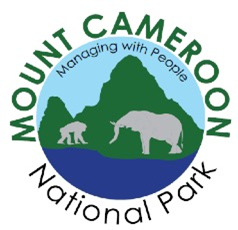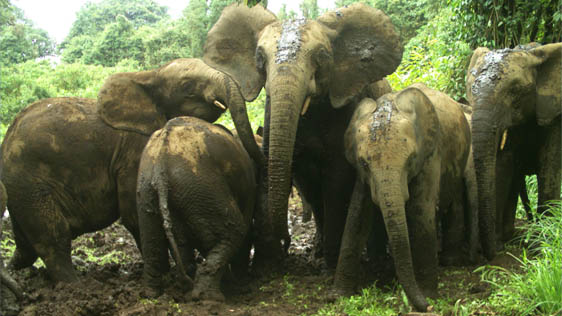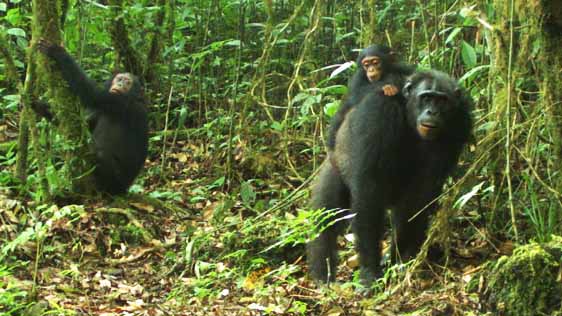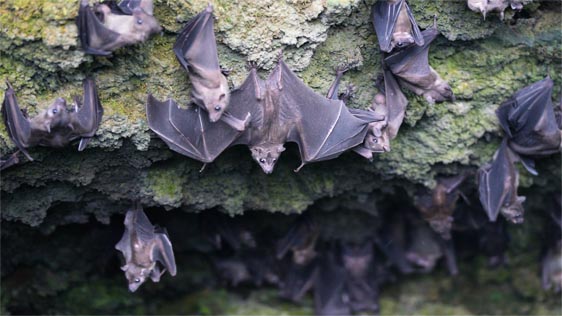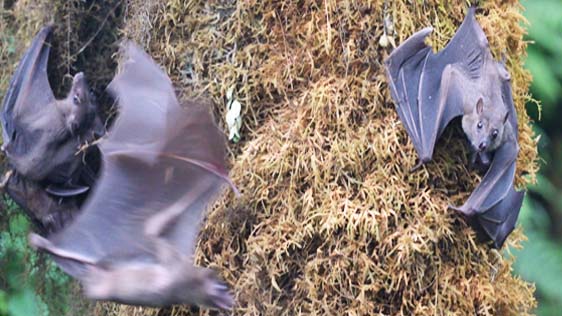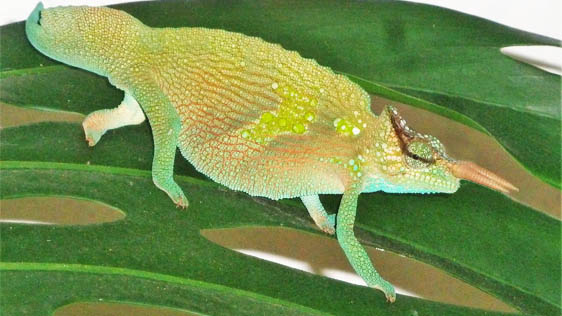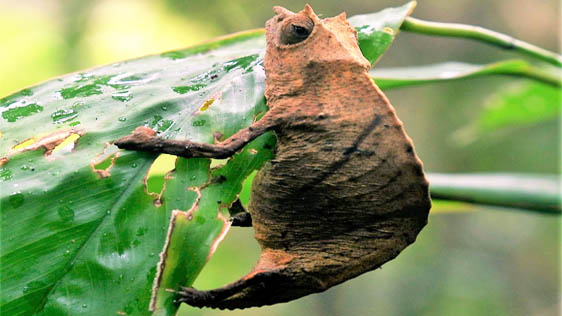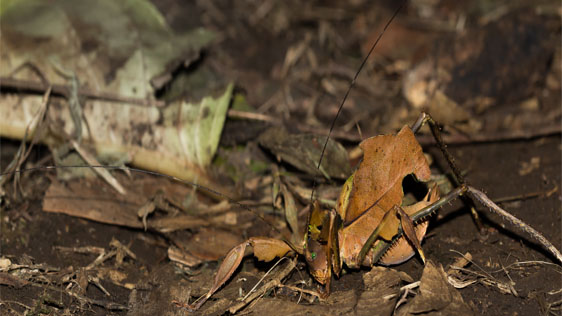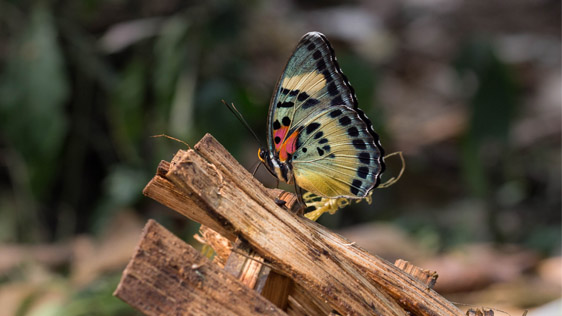Wildlife & Habitat of Mount Cameroon National Park
Reserve a trip to Mount Cameroon Now
A Living Sanctuary of Africa’s Biodiversity
Mount Cameroon National Park (MCNP) is one of the richest biodiversity hotspots in Africa, home to an extraordinary range of flora and fauna. Its unique altitudinal gradient, stretching from lowland rainforest at sea level to alpine grasslands at 4,100 m , creates a natural sanctuary that sustains a wide variety of habitats and species, many of them found nowhere else on Earth.
Habitats & Ecosystems
- Lowland Rainforest (0–800 m)
- Sub-Montane or Cloud Forest (800–1,800 m)
- Montane Forest & Grassland (1,800–3,000 m)
- Alpine Grassland (Above 3,000 m)
Lowland Rainforest (0–800 m)
- Dense evergreen forest with towering trees and lush undergrowth.
- Rich in plant diversity, including many medicinal and timber species.
- Home to primates, forest elephants, and antelopes.
Sub-Montane or Cloud Forest (800–1,800 m)
- Often covered in mist and moisture-rich air.
- A hotspot for endemic plant species (11 endemics identified here).
- Provides critical habitat for monkeys and bird species.
Montane Forest & Grassland (1,800–3,000 m)
- Transition zone with mixed vegetation of shrubs, grasses, and forest patches.
- Grazing ground for bushbuck and other antelopes.
- Overlooks volcanic craters and lava fields.
Alpine Grassland (Above 3,000 m)
- Rugged, wind-swept slopes with unique grasses, lichens, and mosses.
- Stunning views of the surrounding region.
- Offers a rare chance to witness flora adapted to extreme altitudes.
Wildlife Highlights
Flagship Mammals
- Forest Elephant (Loxodonta cyclotis): One of the park’s iconic species, often seen up to 2,000 m altitude.
- Chimpanzee (Pan troglodytes): Endangered primates that thrive in MCNP’s forests.
- Drill Monkey (Mandrillus leucophaeus): Rare and endangered, with Mount Cameroon as one of its last strongholds.
- Preuss’ Monkey (Cercopithecus preussii): Critically endangered primate, endemic to this region.
- Other primates include red-eared monkeys, mona monkeys, putty-nosed monkeys, red-cap mangabeys, and crowned guenons.
Small Mammals
- At least 22 species of bats recorded, contributing to pollination and insect control.
Birds
Recognized as an Important Bird Area (IBA).
- Over 330 bird species, including the endemic Mount Cameroon Francolin and Speirops.
- A paradise for birdwatchers, with high species diversity across altitude zones.
Reptiles & Amphibians
- The park hosts a variety of reptiles and amphibians adapted to its diverse habitats, including species still being studied.
Big Mammals
- Mount Cameroon National Park has been classified “exceptional priority site” for the conservation of the Nigerian-Cameroon Chimpanzee (Pan troglodytes ellioti) EN, the most endangered of the four recognized chimpanzee subspecie (see Regional Action plan for the conservation of the Nigerian-Cameroon Chimpanzee, Morgan B.J. et al. 2001).
- Other endangered and threatened primates are the Drill (Mandrillus Leucophaeus leucophaeus) EN, Preuss’ guenon (Allocchrocebus preussi preussii) EN and Red-eared monkey (Cercopithecus erythrotis camerunensis) VU. Present are also the Red-capped Mangabey (Cercocebus torquatus) VU, Crowned Guenon (Ceropithecus pogonias) VU, Putty nosed monkey (Cercopithecus nictitans) LC, and Mona Monkey (Cercopithecus mona) LC.
- As nocturnal primates, also present are several species of Galago and a potto (buThe park hosts forest elephants (Loxodonta africana cyclotis) on its southern and western flank, probably populations living most high in altitude in the world, being observed up to 2000 m altitude.
- Most prominent to be seen on the mountain, specially in the savannah is the bush bock (Tragelaphus scriptus). Other big mammals present are the Bay duiker (Cephalophus dorsalis),
- Blue duiker (Cephalophus monticola), Yellow backed duiker (Cephalophus sylvicultor), and the Red river hog (Potamochoerus porcus).
- Most of the animals are present in the sub-montane and montante forests.
Small Mammals
Birds
Reptiles and amphibians
- Eighty-six (86) reptile species, representing more than one third of the reptile fauna known in Cameroon, are found in the Mt Cameroon area, making this site among the richest in the country.
- Lowland forest had the greatest number of species (58), followed by submontane forest (45), montane forest (21), and marine (4) species.
- A number of rare or little known reptiles are there to be found like the skink Lacertaspis gemmiventris and the blind snake Typhlops decorosus.
- Mt. Cameroon appears not to have any strictly endemic reptile species, but it hosts two regional Cameroon highland endemics, the Cameroon two horned Chamaeleon (Triocerus montium) and Lacertaspis gemmiventris (Gonwouo et al. 2007).
- The reptiles represent about 30% of the estimated Cameroon reptile fauna out of 283 species. Amphibian species of conservation concern include an endemic toad (Werneria preussi) and near-endemics, such as the four-digit toad (Didynamipus sjostedti), Tandy’s small tongue toad (Werneria tandyi) and a frog (Arthroleptis bivittatus) (Birdlife International 2014, IUCN 2014). Recently a frog species collected in 1906/7 by O. Rau and C. Feldmann at Bibundi was re-examined and named Hylambates rufus aubryioides (Köhler 2009). The species has not been recorded after this record.
Insects
Mount Cameroon harbours many thousands of insects and other arthropods species, unfortunately this biodiversity is still mostly unexplored. Butterflies are indisputably the best known group, with over 320 species found by the recent survey (Tropek et al., unpublished data). Three of these species (Ceratrichia fako, Charaxes musakensis, Lepidochrysops liberti) are endemic to Mount Cameroon only, all of them occur in montane and submontane forests only. Over 20 other species are sub-endemic, i.e. occurring in some other mountains of Cameroon, Nigeria or Bioko as well. The recent description of C. fako (bearing the local name of the mountain: Fako) and L. liberti (Sáfián & Tropek 2016) proves that even such favourite group can still be hiding some local surprises. The local biodiversity of moths is much higher, but also much less known. The recent survey revealed already almost two thousands of moth species, many of these previously unknown for science. At least dozens of these are considered as endemic for Mount Cameroon, for instance Geraldocossus durreli, Alucita fokami, A. besongi or A. janeceki belong among these. In the recent years, at least 12 new species have been described from Mount Cameroon (Przybyłowicz 2013, Yakovlev and Sáfián 2016, Ustjuzhanin and Kovtunovich 2016, Ustjuzhanin et al. 2018), numerous others are under description now. Currently, details from biology and habitat needs of individual species of butterfly and moths, as well as structure of entire communities are extensively studied, you can follow some news in www.insect-communities.cz. There are no systematic studies on other groups of invertebrates, but at least a goblin spider Triaeris fako is consider as an endemic species.
